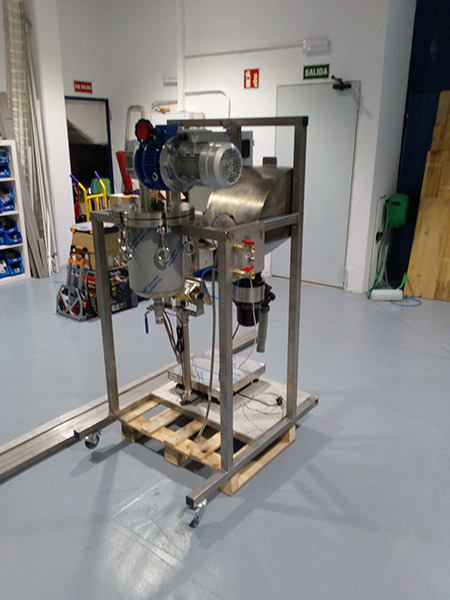One of the objectives of the LIFE Zero Cabin Waste project is to try an alternative treatment to the current one for Category 1 organic waste, that is, catering waste that comes from international flights.
Currently this waste is taken to landfill, as stablish by the SANDACH regulations for waste classified as category 1. However, in the coming months a pilot test will be started to treat this waste with a sterilizer-digester equipment.
In the sterilizing equipment, the pre-treatment phase of the organic waste will be developed before moving on to anaerobic digestion. This equipment consists of sterilization and pasteurization autoclave, as well as weighing, inlet crusher and reception hopper.
The first step is the weighing of the input waste, subsequently, a crushing / liquefaction process is applied to obtain an optimum size for the anaerobic digestion process.
The organic waste is conducted to the autoclave, where it is sterilized or pasteurized, thus guaranteeing the hygienization of the substrate and the destruction of possible pathogens. It has a capacity of 10L.
Once the process is finished, a crushed and sterilized or pasteurized material is obtained, with assumable characteristics for the subsequent anaerobic digestion process. The material is deposited in a reception tank that feeds the digester with about 3-4 kg of material per day.
The digester has a capacity of 100L, and is where the biomethanization process will take place. In this equipment the material will be processed long enough to convert organic matter into biogas with high energy potential. It will also generate a material called digestate that may be susceptible to agricultural application.

